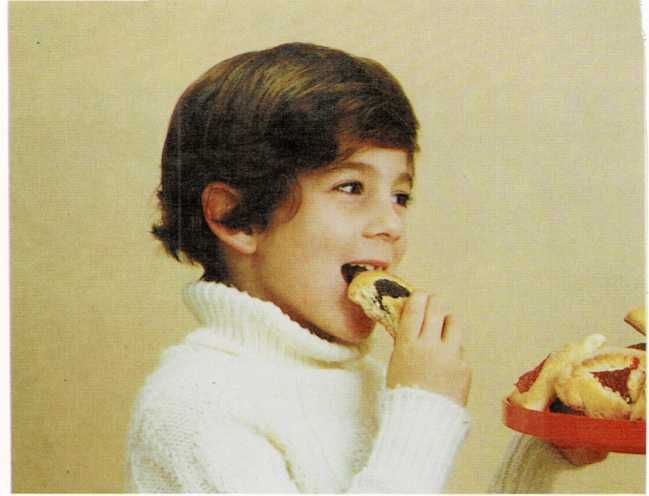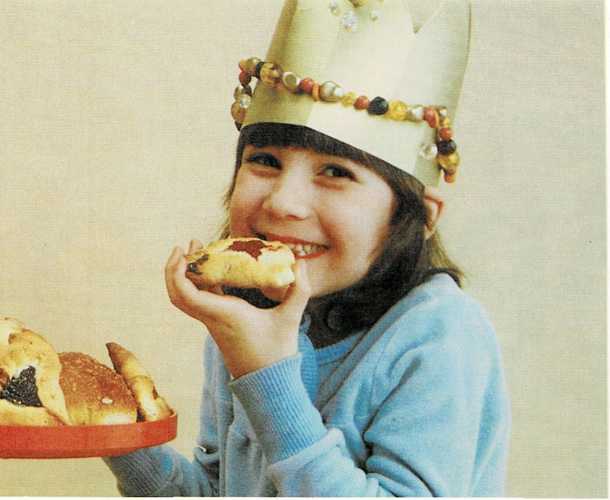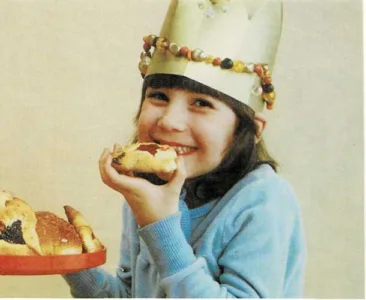
Purim
Haman’s hat
Would you like to wear a mask and a costume on a holiday that’s not
Halloween? Jewish children do this on a holiday called Purim
[(poo]{.smallcaps} rihm), or the Feast of Lots.
This merry holiday falls on the fourteenth day of the Hebrew month of
Adar, which comes in February or March. Jewish people everywhere
celebrate Purim with great joy. It is a happy time, for it recalls how
good Queen Esther saved the Jews from death.
The full story is in the Book of Esther in the Bible. This story is read
on Purim, at home and in places of worship called synagogues
[(sihn]{.smallcaps} uh gawgs).
Long ago, in Persia (now Iran), there was a wicked man named Haman.
Haman was angered when Queen Esther’s cousin, a Jew, refused to bow
before him. To get even,

At Purim, children enjoy three-cornered pastries called Hamantashen.
These pastries are filled with fruit and nuts, or with poppy seeds
and honey.
Haman plotted to kill all Jews. The day was to be decided by lot. (A lot
is a piece of paper that is picked by chance in order to decide
something.) But Queen Esther pleaded with her husband, the king, and
saved her people.
When the story of Esther is read on Purim, people often follow an
ancient custom. Everytime Haman’s name is mentioned, they stamp their
feet or rattle a noisemaker to show how they feel about him.
The joy of Purim is shown in other ways, too. Gifts are given to friends
and the needy. And children put on plays that tell the story of Queen
Esther.
In the evening, family and friends sit down for a happy Purim feast.
Among the foods enjoyed are three-cornered pastries called
Hamentashen, or \”Haman’s hat”—even though hamantashen really
means \”Haman’s pockets.” And sometimes these goodies are even called
\”Haman’s ears”!

